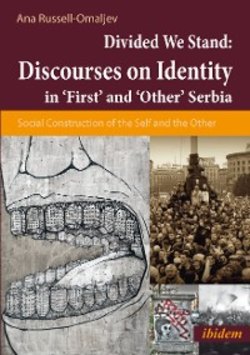Читать книгу Divided We Stand: Discourses on Identity in ‘First’ and ‘Other’ Serbia - Ana Omaljev - Страница 12
Methodological approach
ОглавлениеDiscourse theory, as Howarth and Stavrakasis note, investigates the way in which social practices articulate and contest the discourses that constitute social reality.[53] By using critical discourse analysis (CDA),[54] this study investigates how themes, discursive strategies and linguistic devices are used to construct the idea of “Europe” within the “First” and “Other” Serbia discourses. This work reflects a constructivist perspective in which different actors, at different times, relying on and interpreting history and each other’s role in it, may come to view belonging in different ways. I argue that a combined model of constructivist and discourse theories can aid one’s understanding of how values, beliefs and ideas are conditioned by the dominant discourse, and thus allow one to reach more definite conclusions. Additionally, by identifying the framework of competing political narratives, discourse theory tools can explain how identity is constructed in the public sphere. By placing emphasis on the contested image of Europe, this study comes to a better understanding of how the First and Other Serbia discourses utilize and embrace the liberal or illiberal value system. In this way, the range of theoretical bases applied permits the identification of the alternative political culture beneath the political surface. It will be clear from my analysis that the First and Other Serbia discourses serve both to include and to exclude, they define the “in-groups” as well as the “out-groups”; the “Us” as well as the “Other,” which is most commonly Europe or other regional countries within South-Eastern Europe. More specifically, Chapters 3, 4 and 5 focus on how First and Other Serbia actors participate in dialogue. Meaning, noted Bakhtin,[55] does not belong to any of the speakers because it arises from the mutual correspondence between them. In the Bakhtinian sense, I will analyze how these actors construct in- and out-groups, and predicate certain values to the Serbian Self and the European Other.
As a result of employing these methods, there will be no real “Serbia” or “Europe”[56] to be discovered, as national identity is an constant invention.[57] Reicher and Hopkins suggested that “when one researches the national identity, one needs to ask not whether these identities are true or false, but what is their function in society, and whose reactions they are, and whose interests these identities serve.”[58] Following Hansen, I believe that the adoption of discursive epistemology makes an intrinsic identity an impossibility.[59] To this end, social representations are not merely reproductions of reality, they are also prescriptive and serve as regulative ideas for the formation of collective identities.[60] Constructivists associate identity with studies of discourses, and have challenged pre-existing assumptions that culture and politics, and thus also national identity, are monolithic phenomena which are apparent to all members of the community despite any internal turmoil. I submit that the constructivists’ parameters of Self and Other provide a useful approach for both identifying and interpreting First and Other Serbia discourses. I use these parameters in order to reveal, in some detail, the ways in which the First and Other Serbia’s versions of history serve to underpin different ways of imagining the Serbian nation. First Serbia’s attempt to essentialize Serbian identity as special, antique and unique, as well as Other Serbia’s perception of Serbian identity as inferior and backward in relation to Europe, echoes notions of “belonging or not belonging to civilization” or “being or not being civilized.” I put forward that any meaningful analysis of top-down elite constructions of Europe and of official representations of the nation state, can only be achieved through a non-essentialist approach. This study therefore aims to deconstruct various essentializations of identity, Serbia and Europe. It is pertinent to note that this book does not understand the process of differentiation as a closed process. The labels analyzed, such as Europe, European, traitor, missionary intelligentsia,[61] Serbs etc., play off one another, across a variety of texts and media. Thus, one observes the representation of “difference” and “otherness” across a broad swathe of Serbian public space, and the frequent repetition of similar representational practices.
